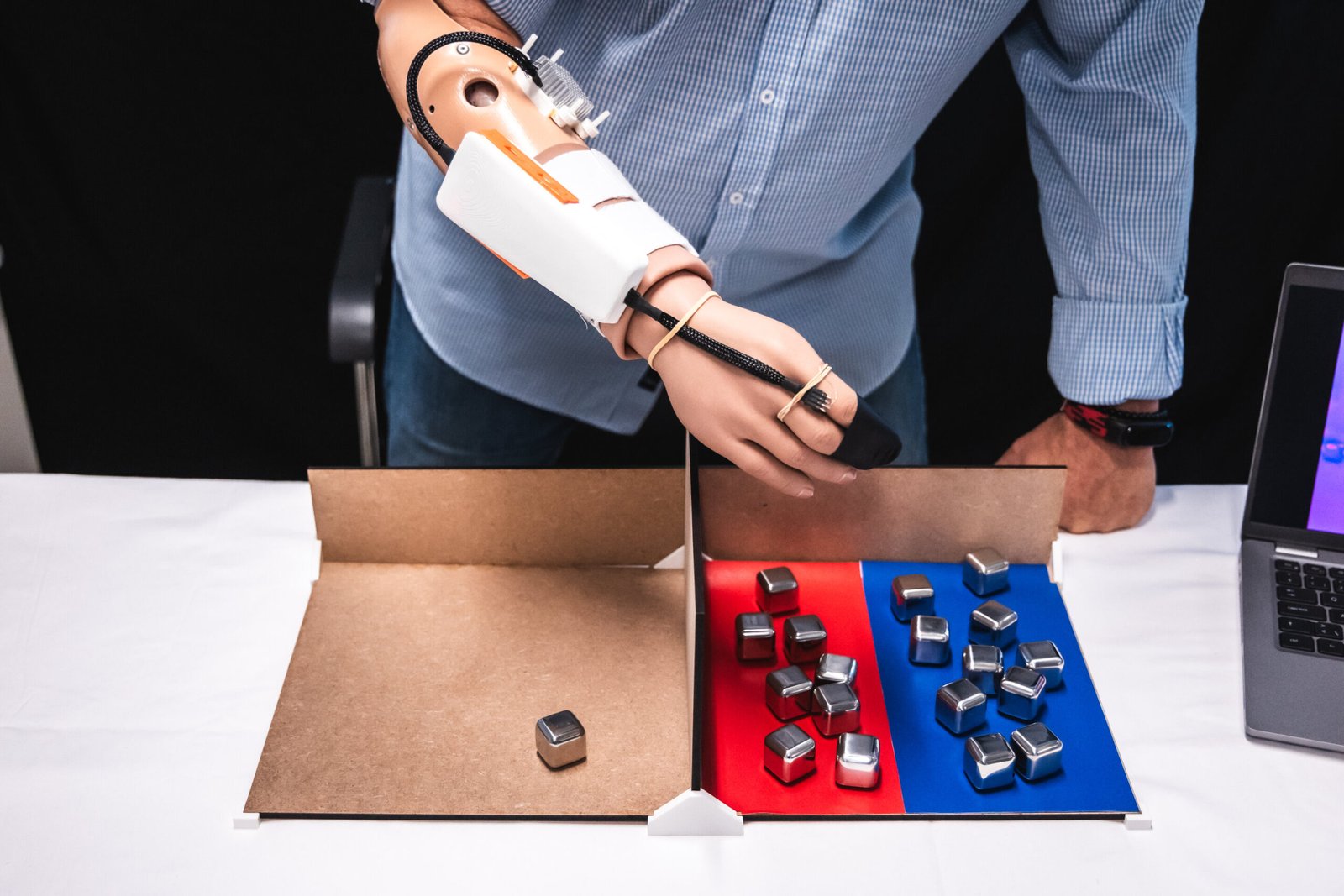A team of researchers has unveiled a pioneering device named “MiniTouch,” which enables individuals with amputations to perceive temperature using their prosthetic hands.
In a groundbreaking development, a team of researchers from Italy and Switzerland has unveiled a pioneering device named “MiniTouch,” which enables individuals with amputations to perceive temperature using their prosthetic hands. This innovation marks a significant stride towards creating prosthetic limbs that restore a comprehensive range of sensory abilities, thereby enhancing their utility and acceptance among wearers.
The device was successfully integrated into the prosthetic hand of Fabrizio, a 57-year-old man who has undergone an above-the-wrist amputation. Through rigorous testing, Fabrizio demonstrated remarkable accuracy in identifying variations in temperature, distinguishing between materials, and gauging the warmth of different objects. These findings, detailed in a report published on February 9 in Med, underscore the transformative potential of MiniTouch in augmenting the functionality of prosthetic limbs.
Neuroengineer Luke Osborn of Johns Hopkins University Applied Physics Laboratory emphasized the importance of integrating such technologies in a manner that facilitates practical tasks for prosthesis users. He noted that the introduction of novel sensory feedback modalities holds the promise of unlocking previously unattainable levels of functionality.
MiniTouch not only enhanced Fabrizio’s ability to discern artificial from human touch but also substantially improved his overall accuracy in tactile perception. While acknowledging that the device’s performance still falls short of the natural tactile experience, neuroengineer Solaiman Shokur of EPFL, the Swiss Federal Institute of Technology, highlighted the strides made in bridging this gap.
The quest to restore a sense of touch to prosthetic limbs has witnessed significant advancements in recent years, with temperature detection representing one of the final frontiers. Jonathan Muheim, an engineer at EPFL, emphasized the critical role of addressing temperature sensation to achieve a truly lifelike prosthetic limb.
Building upon previous research that identified residual limb spots capable of generating temperature sensations, the team meticulously mapped these sensations to corresponding areas on Fabrizio’s arm and prosthetic hand. By attaching a temperature sensor to the fingertip of the prosthetic hand and utilizing a controller unit to relay temperature signals, MiniTouch effectively replicated temperature perception in Fabrizio’s missing hand.
While the current iteration of the device features a single sensor at the fingertip, the research team envisions expanding its capabilities by incorporating additional sensor-stimulator pairs to create more temperature-sensitive regions on the prosthetic hand. Furthermore, they aim to develop a multifunctional prosthesis capable of sensing both touch and temperature, with plans to achieve this milestone in the near future.
However, challenges such as the speed of temperature relay and the need for real-world testing loom on the horizon. Luke Osborn and his colleagues have pioneered a thin, Band-Aid-like device capable of delivering realistic cooling sensations swiftly, addressing concerns regarding the speed of sensory responses. Despite these advancements, rigorous testing in diverse environments remains imperative to ensure the device’s reliability and efficacy outside the laboratory setting.
Looking ahead, Fabrizio envisions leveraging MiniTouch to enhance his everyday activities, particularly in the kitchen where he hopes to improve his culinary skills. His testimony underscores the profound impact that such technological innovations can have on the lives of individuals living with limb loss, empowering them to navigate the world with newfound confidence and capability.
As MiniTouch prepares to transition from laboratory prototype to practical tool, the collaborative efforts of researchers, engineers, and amputees alike are poised to usher in a new era of prosthetic innovation, where artificial limbs not only replicate but enhance the sensory experiences of their users. With each advancement, the boundaries of possibility continue to expand, offering hope and opportunity to millions worldwide.
